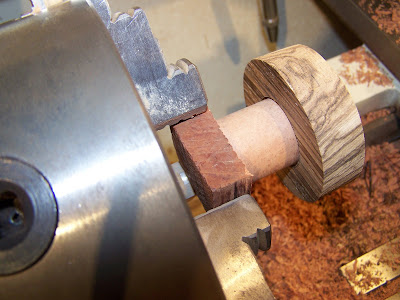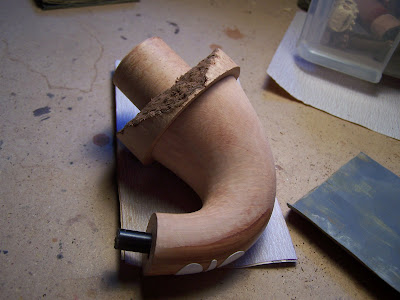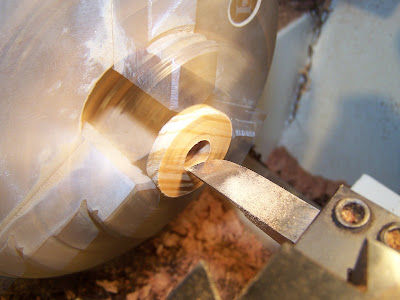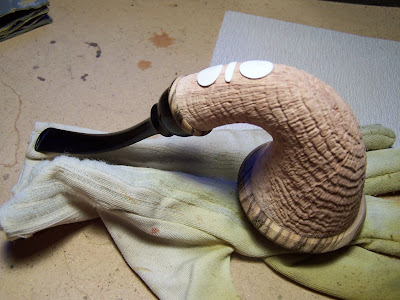
Bakelite radio from the 1940's
I've always tried to be discerning about the materials I am willing to work with. I have turned down commissions where lucite stems were requested, and I tend to eschew the ornate--adornments, multiple stem flourishes, and pipe "jewelry" of any sort. I really prefer for line, shape, and proportion to do most of the talking, but recently I have become completely smitten by a "new" material . . . bakelite.





In actuality, though, bakelite is not new at all. It was invented in 1907 by a Belgian immigrant to the US named Leo Bakeland. In 1927, Bakeland's patent on the chemical composition of the material expired, opening the door to other manufacturers as well as myriad uses. In the 20's and 30's bakelite was used in the manufacture of records, cameras, telephone receivers, steering wheels and shift knobs, spectacles (that's what they called glasses way back when ), and any number of other products. Throughout the 40's, 50's and 60's it fed the American consumerist boom, employed in items such as poker chips, radios, children's toys, travel razors, electric irons, billiard balls, and especially jewelry. Because of its strength and beauty--it could easily be colored to suit any preference--bakelite began to replace steel and wood as the product of choice in numerous arenas. It was dubbed the "material of a thousand uses."


Bakelite bangles from the 40's. This shows the marvelous array of colors in which bakelite was produced.
Bakelite is now highly collectible with some mid-century radios fetching upwards of $10,000 USD. Despite its ubiquity throughout a fair portion of the 20th century, bakelite has become quite rare, and highly collectible. For my purposes--namely pipe stems and decorative rings--it is even more so. Sourcing antique bakelite rod can be very difficult. When you can find it, it is often cracked, occasionally inauthentic, and always obscenely expensive. It is also very difficult to work with. It gums up and dulls tools quicker than anything I've ever seen, and can be very difficult to bend. The color is unpredictable--the outside of the rod may be brown and the inside lilac--so you can't always know what you've got until you cut into it.
Despite all these drawbacks, however, I really love the stuff. Nothing else is as creamy and smooth when finished. It plays with light brilliantly, even the opaque material going slightly translucent at the edges. It also meets all of my criteria for inclusion on a high grade pipe--it is rare, expensive, requires great skill to work with, and has no equal amongst cheaper commercially available materials such as lucite. I've always been a sucker for things vintage, and bakelite is no exception. Look for much more of this beautiful material coming from my workshop.

Lovely hexagonal toffee bakelite stem on what I've dubbed the Machinist's Dublin

Blasted Matador with jade hemisphere saddle

An array of colors from ivory to deep green

Crimson and gold bakelite on this Deco-Fish

Playing with light, this seaweed bakelite stem goes translucent at its thinnest points.









































































